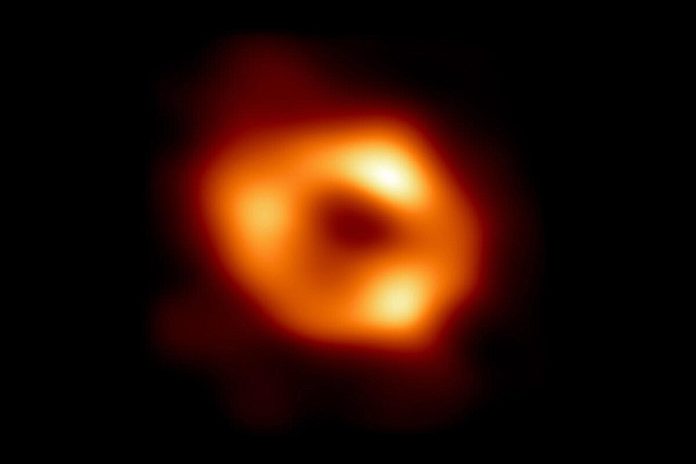
Astronomers have long been puzzled by the origins of supermassive black holes—enormous objects found at the center of most galaxies, including our own Milky Way.
These black holes can weigh millions or even billions of times more than the sun.
Now, scientists from the Nevada Center for Astrophysics (NCfA) at the University of Nevada, Las Vegas (UNLV), have found new clues that suggest the supermassive black hole at the center of our galaxy, known as Sagittarius A* (Sgr A*), might have formed through a massive cosmic merger.
Their findings, published in the journal Nature Astronomy, build on data collected by the Event Horizon Telescope (EHT).
In 2022, the EHT captured the first-ever direct image of Sgr A*, using data from radio observatories around the world to create a virtual telescope as large as Earth.
The research team, led by Yihan Wang and Bing Zhang, analyzed this data to explore how Sgr A* might have formed.
There are two main theories about how supermassive black holes grow: one is that they gradually gain mass by pulling in gas and other matter over time, and the other is that they grow through the merger of two smaller black holes.
The scientists at NCfA believe the second theory is the most likely explanation for Sgr A*.
One key clue is the black hole’s unusually fast spin and its misalignment with the rest of the Milky Way’s movement.
Wang and Zhang’s team found that these characteristics could best be explained by a collision between Sgr A* and another supermassive black hole, likely from a smaller satellite galaxy that merged with the Milky Way.
The researchers ran detailed computer simulations to model how such a merger would affect the spin of Sgr A*. They found that if Sgr A* merged with another black hole about 9 billion years ago, in a 4:1 mass ratio, this could account for the unusual spin observed today.
This event likely occurred after the Milky Way’s merger with another galaxy, known as Gaia-Enceladus.
“This discovery helps us better understand how supermassive black holes like Sgr A* form and evolve,” said Wang, a postdoctoral fellow at UNLV.
“The misaligned, fast spin of Sgr A* suggests it may have collided with another black hole, which changed its spin direction and speed.”
In the future, tools like the Laser Interferometer Space Antenna (LISA), set to launch in 2035, could help detect similar black hole mergers across the universe.
These findings not only provide insight into the history of our galaxy but also support the idea that black holes can grow through mergers, unlocking more secrets of the cosmos.



